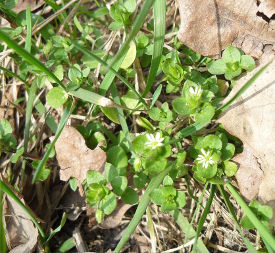
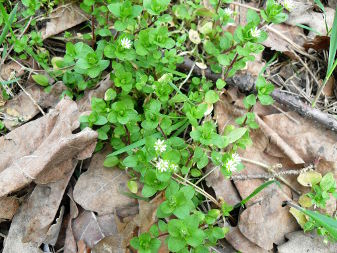
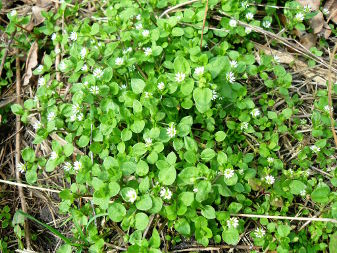
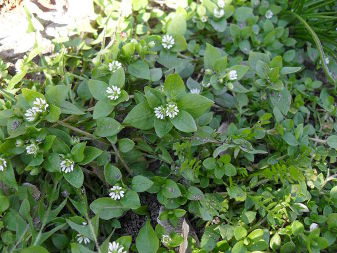
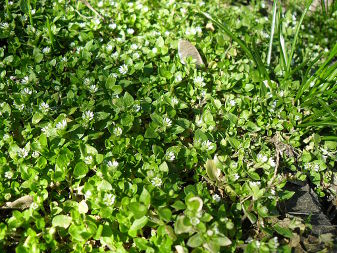
Common Chickweed (Stellaria media), fam. Caryophyllaceae.
This unpretentious plant has more or less settled all the planet around. This is explained by its short lifecycle, when the dying-off shoots are continuously replaced by new ones from the roots and the seeds.
Tiny chickweed is unnoticeable among the surrounding plants from May till September. In April and October-November there are peaks of growth and blooming of this herb. During these months you could eat a little of these greens – they are quite tender, though maybe its taste is not perfect. It contains saponins, vitamins Е, C (114 mg%), carotene (up to 24 mg%), tanning substances, flavonoids, lipids, minerals (especially a lot of potassium), etc. Unfortunately, chickweed can also accumulate nitrates and oxalates. The oxalates content in chickweed is somewhat lower than in related plants of the Polygonaceae (sorrel, spinach, rhubarb), Portulacaceae (purslane) and Chenopodiaceae (lambsquarters, beet greens). However, it is wise not to overconsume chickweed in salads. Other Stellaria species, like lesser stitchwort, are not edible at all, due to high concentrations of toxic saponins.
Chickweed provides analgetic, choleretic, antiinflammatory, wound-healing, blood-stopping, tonic actions, stimulates heart function and metabolism, acts favorably on the central nervous system. Its juice is consumed against general weakness, unhealthy weight loss, avitaminosis, functional heart disorders, cholecystitis, hepatitis. It is applied externally to rinse sore eyes, and as hot lotions for rheumatism, sciatica and various aches.